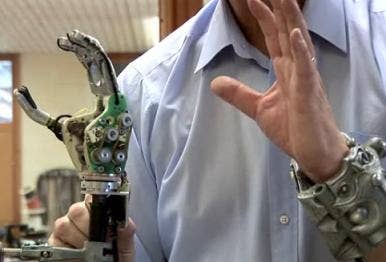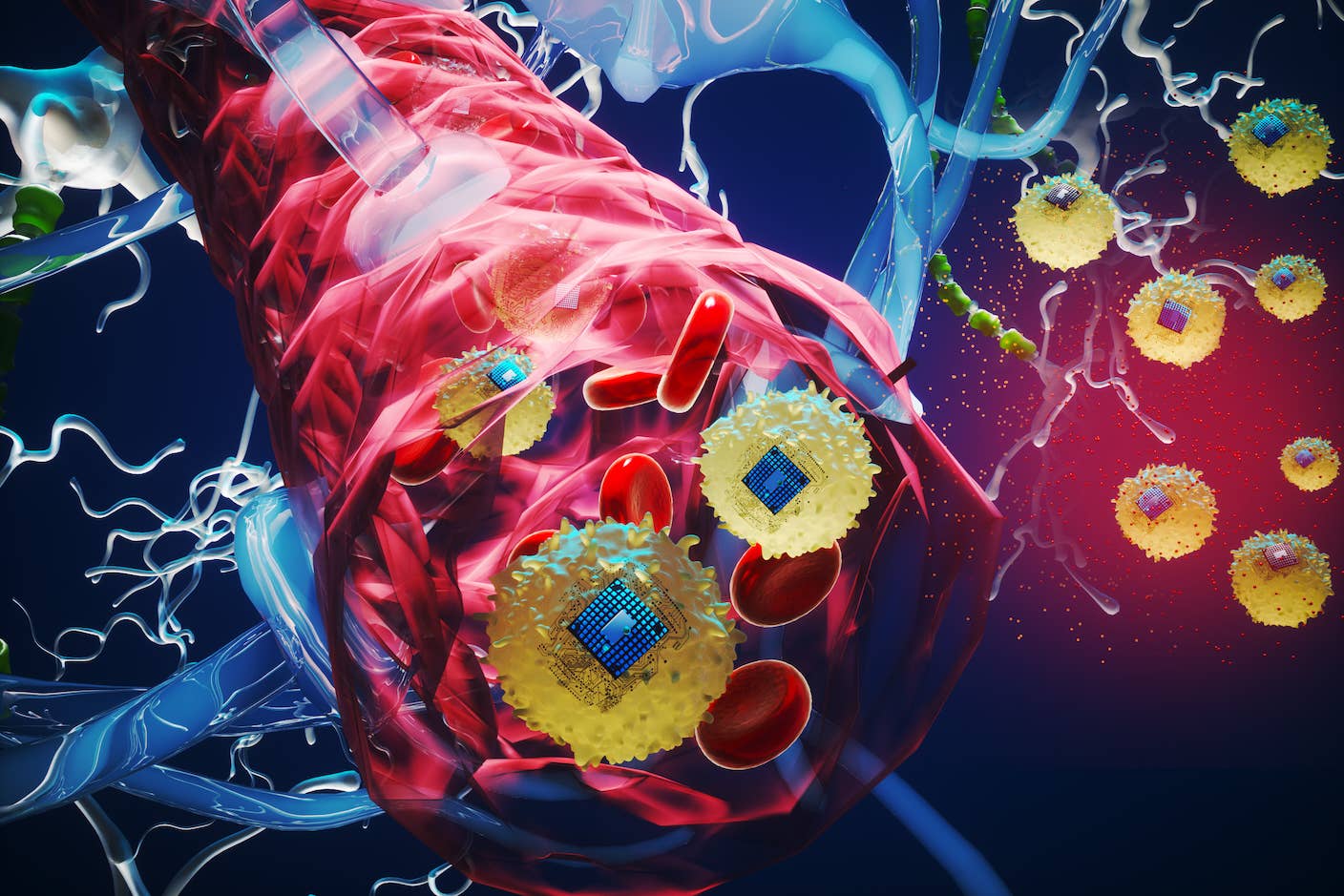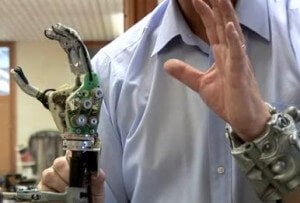Kevin Warwick, Once a Cyborg, Now Prophet of the Man-Machine Future

Share
He has used his mind to control a robotic hand, he has sent his thoughts across the Atlantic and clenched a mechanical fist, and he has even felt, in his own neurons, the signals from his wife's nerves. Kevin Warwick is a professor at Reading University in England, a pioneer in cybernetics and a former cyborg. In 1998, doors would open and lights would follow his passing due to an electronic chip in his body. In 2002 a 100 electrode array was wired into the nervous system of his arm so that he could remotely control an artificial hand. Now, Silicon.com has a wonderful nine minute interview with Warwick, exploring his work and what the future holds for man and machine. According to the former cyborg, the two will become one. He's already putting animal brain cells in robots as a control system! Watch the video in its entirety below, and get ready to meet the man who thinks he has experienced the future of humanity and returned to tell the tale.
The movie starts off with slides, but don't worry, real video follows shortly. Make sure to catch Warwick describe the remote limb experiment (2:00), having his wife hooked up to his nerves (2:40), rodent brain cells in robots (~4:00), and how the human brain will transcend our current limits (~5:50).
Warwick has rather remarkable credentials: working for telecomms at age 16, offered a chair at Reading by age 33 (very young), and a list of publications that is impressive. Those credentials give a lot of weight to his predictions that man and machine might become one and the same in the upcoming decades. Ray Kurzweil and other futurists have made the same prediction, and we've already seen the first patient-ready brain computer interface get ready to go on sale. It seems increasingly likely that our brain will be able to directly interact with machines via our nervous system. In fact, this has already happened in limited ways.
Be Part of the Future
Sign up to receive top stories about groundbreaking technologies and visionary thinkers from SingularityHub.


That Warwick was able to use his nerves to control a robot arm was truly revolutionary in 2002, but now the feat has been copied several times. Notably, similar work has allowed amputees to feel and interact with artificial limbs such as Smart Hand and Life Hand. RFID chips (like the one Warwick had implanted in 1998) are becoming more common, used for security and even as replacements for credit cards. In each case, Warwick was way out ahead of the field.
Which makes me very curious about his current project (Animat) which uses rat neurons in the control circuits of robots (as seen in the video). Sensors in the robot send signals to the cluster of neurons which then send their own signals back to the robot to control its movements. According to a press release from Reading, Animat could help us understand how memories are formed and could lead to better treatments for brain diseases like Alzheimer's. That's a wonderful goal, but I must admit I'm simply fascinated by the use of biological elements in a robot. I've seen an art project where a cockroach controlled a bot, but Warwick's work is the first I have seen with nerve cells integrated directly into the command processes of an automaton.
Getting biological and mechanical systems to work together in symbiosis is truly remarkable, whether those systems involve humans and artificial limbs or rat cells and robots. Warwick's vision for how that symbiosis may evolve is equally remarkable. In the future, we could all have enhanced senses, enhanced cognitive functions, and could communicate with each other directly brain to brain. That would reshape the way we conceive of ourselves, change the very notion of what it means to be human. Whether or not everyone feels comfortable with that change, there will be those like Warwick who eagerly await the benefits of becoming a cyborg. They will continue to push the boundaries of current research and one day may give all of us the option of upgrading ourselves. Brain 2.0 could be just around the corner.
[screen capture and video credits: Silicon.com & CBS Interactive]
[sources: Silicon.com, Kevin Warwick website, Reading University]
Related Articles

These Robots Are the Size of Single Cells and Cost Just a Penny Apiece

How Scientists Are Growing Computers From Human Brain Cells—and Why They Want to Keep Doing It

These Brain Implants Are Smaller Than Cells and Can Be Injected Into Veins
What we’re reading
